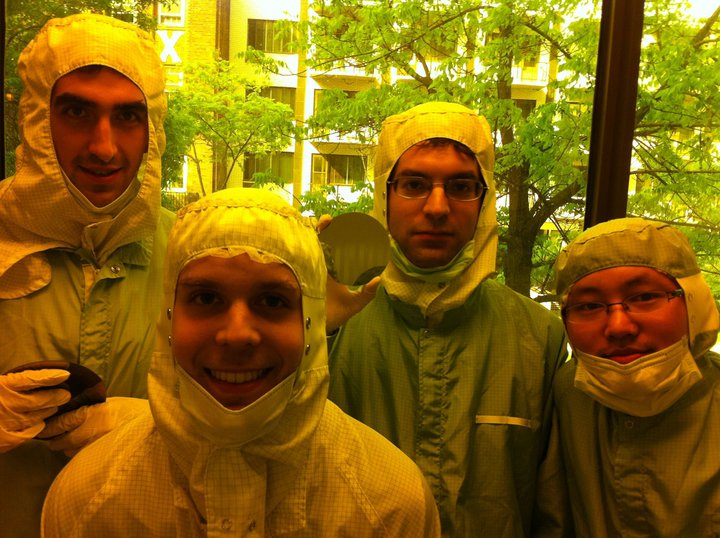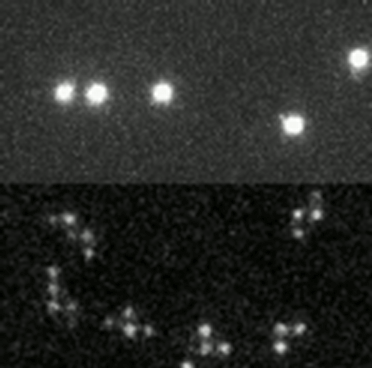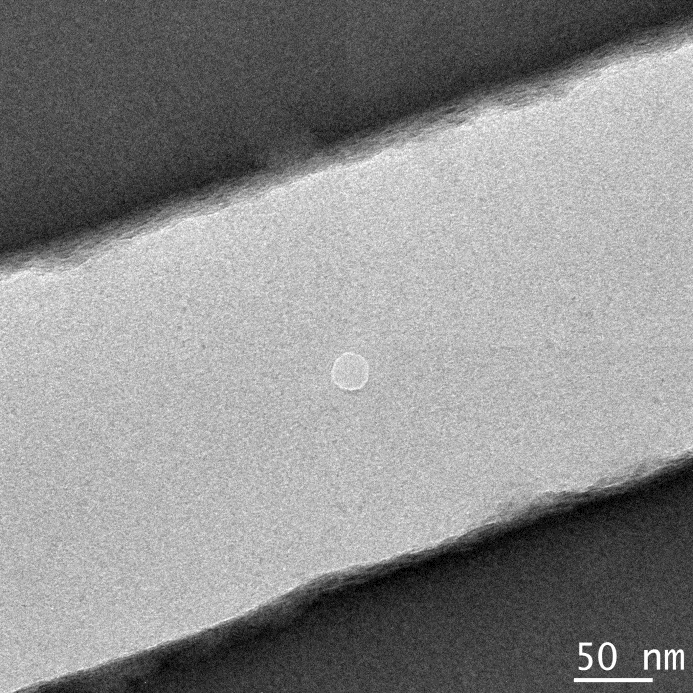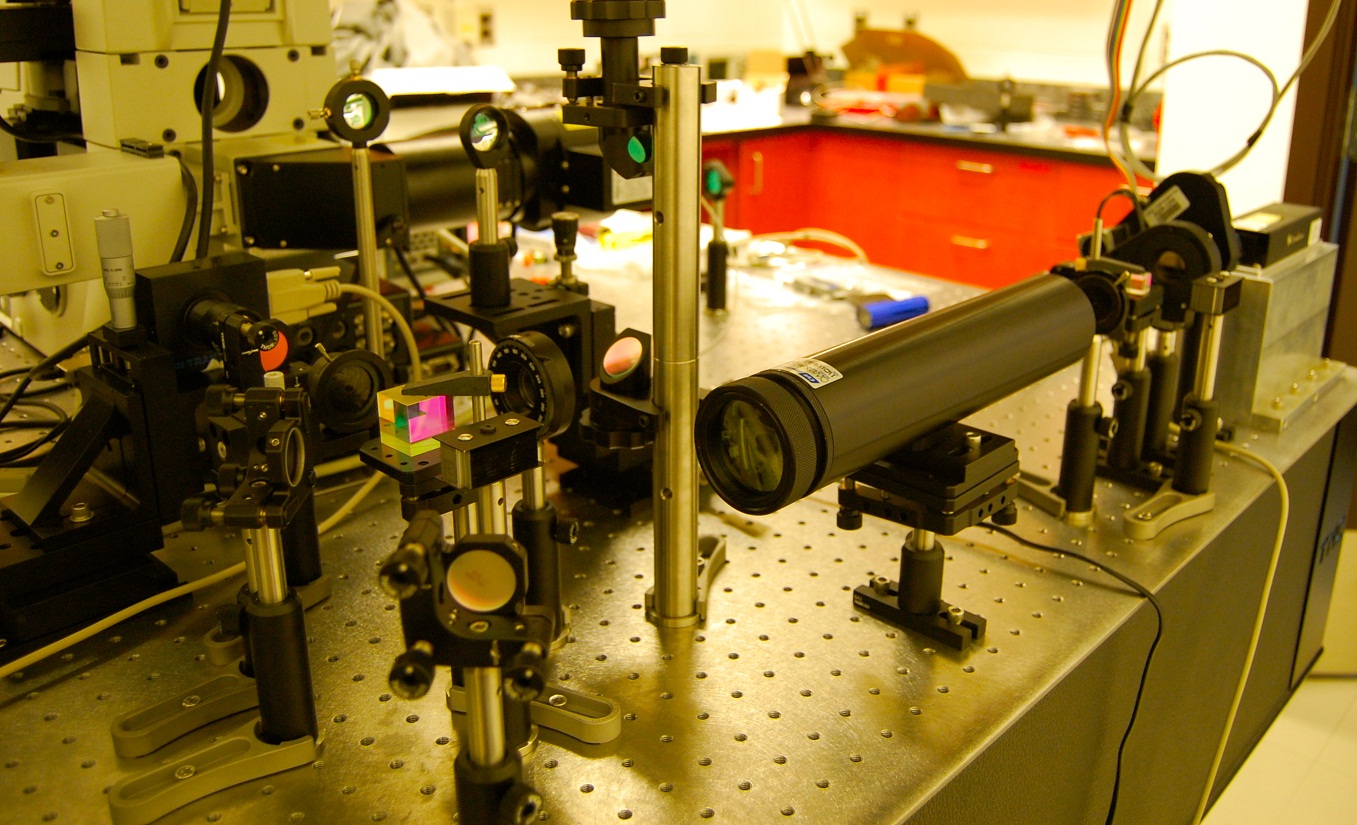 | Group photo in the McGill Nanotools clean room. Left to right: Alex Klotz, Rob Welch, Walter Reisner, Yuning Zhang. |
 | DNA in an array of nanofluidic pits. Entropy pulls the molecules into the pits, while excluded volume pushes them out. We study the interplay of these competing interactions to better understand the behaviour of confined DNA. |
 | By stretching out a DNA molecule in a nanofluidic channel and partially melting it, a map of melted and unmelted regions of the genome can be obtained, yielding information about large-scale genomic organization. In particular, melting mapping yields high contrast barcodes with no need for complex enyzmatic reactions (requiring only a uniform stain). |
 | We are developing a new type of nanofluidic device concept based on coupling nanopores and nanochannels. This is a TEM image of a nanopore embedded in a 200nm nanofluidic channel. |
 | A home-built optical tweezer setup for manipulation of micron-sized objects. |
 | Time-trace image of a DNA molecule being compressed by a trapped bead in a nanochannel. |
 | DNA being extracted from cells in a microfluidic device. |